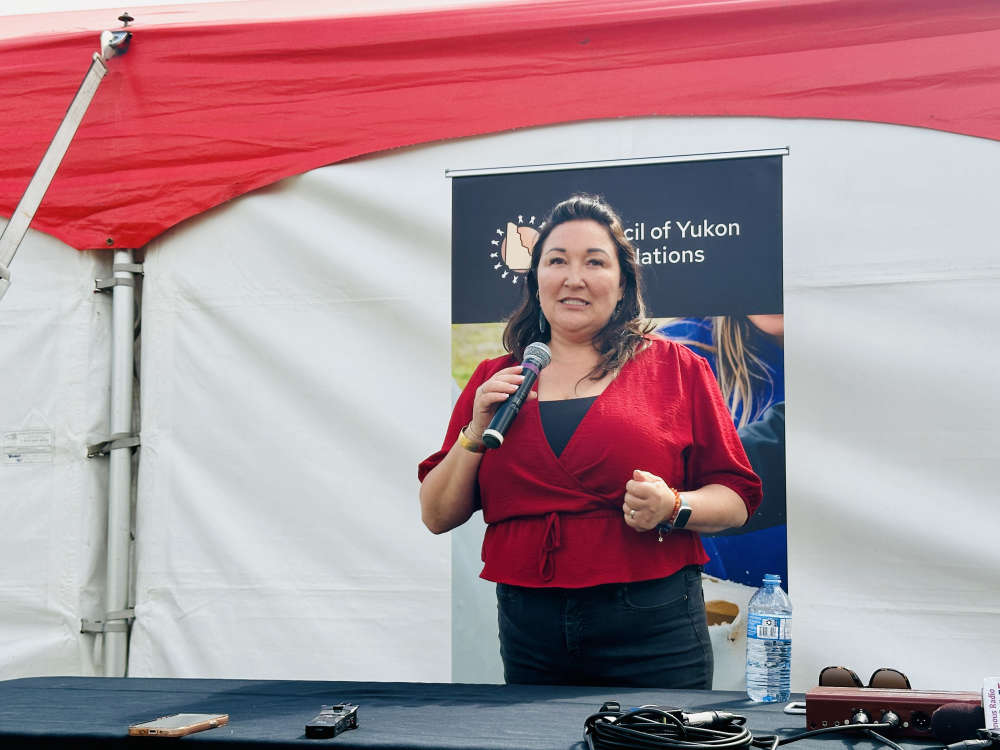
The Aishihik turbine was critically damaged in October, and repair work is not expected to be completed until spring.
The Yukon is facing a heightened risk of blackouts this winter due to a broken turbine at the Aishihik hydro dam, which has reduced the territory's hydro power generation capacity.
According to Minister of Energy John Streicker, the territory's energy supply is precarious, and the risk of blackouts is real. "It really depends on just how cold it gets," Streicker said. "And the other thing that it depends on [is] if we have one of our major facilities go down like a hydro line or something, then we will be in trouble and we will get blackouts."
The Aishihik turbine was critically damaged in October, and repair work is not expected to be completed until spring. To make matters worse, low water levels on Aishihik Lake are further reducing the utility's ability to generate power.
In response to the energy shortage, the Yukon government and Yukon Energy are taking steps to control energy demand. They have launched a program to reduce energy use at peak times, and major industrial users, such as mining companies, have been asked to self-generate power during periods of high demand.
Yukon Energy is also burning more diesel and liquefied natural gas to supplement its reduced hydro power generation. However, this has led to increased emissions and noise complaints from residents living near the diesel generators in Whitehorse.
Streicker acknowledged the concerns and said that Yukon Energy will begin installing soundproofing next year. In the meantime, the utility is exploring alternative locations for some of the generators.
As the territory navigates this energy crisis, residents are being urged to conserve energy and reduce their power consumption during peak hours.



 Math'ieya Alatini elected CYFN Grand Chief
Math'ieya Alatini elected CYFN Grand Chief
 Watson Lake man charged in firearm robbery
Watson Lake man charged in firearm robbery
 House fire in McIntyre contained
House fire in McIntyre contained
 RCMP plane crash caused by faulty sensor: TSB report
RCMP plane crash caused by faulty sensor: TSB report
 New Fireweed Mental Health unit opens at Whitehorse General Hospital
New Fireweed Mental Health unit opens at Whitehorse General Hospital
 Traditional learning camp opens at Whitehorse school
Traditional learning camp opens at Whitehorse school
 Yukon Schools introduce online registration for bus service
Yukon Schools introduce online registration for bus service
 Yukon Government unveils progress in healthcare transformation with 2024 Putting People First annual report
Yukon Government unveils progress in healthcare transformation with 2024 Putting People First annual report
 Whitehorse Emergency Shelter unveils New Artwork celebrating Yukon First Nations culture
Whitehorse Emergency Shelter unveils New Artwork celebrating Yukon First Nations culture
 Former Whitehorse City Councillor Ted Laking announces bid for Yukon Party nomination in Porter Creek Centre
Former Whitehorse City Councillor Ted Laking announces bid for Yukon Party nomination in Porter Creek Centre
 Yukon Government seeks applicants for new Health Authority Board
Yukon Government seeks applicants for new Health Authority Board
 Canada Post strike looms, Yukoners brace for disruption
Canada Post strike looms, Yukoners brace for disruption
 Driver charged in fatal collision that killed Yukon Government Deputy Minister and injured Minister
Driver charged in fatal collision that killed Yukon Government Deputy Minister and injured Minister
 Yukoners encouraged to apply for Northwestel's Northern Futures Scholarship Program
Yukoners encouraged to apply for Northwestel's Northern Futures Scholarship Program
 City of Whitehorse summer transportation maintenance work underway
City of Whitehorse summer transportation maintenance work underway
 Yukon Government seeks input on new downtown public school
Yukon Government seeks input on new downtown public school
 Indigenous leadership takes centre stage: Rebecca Chartrand and Mandy Gull-Masty appointed to key cabinet roles
Indigenous leadership takes centre stage: Rebecca Chartrand and Mandy Gull-Masty appointed to key cabinet roles
 Whitehorse prepares for Annual 20-Minute makeover
Whitehorse prepares for Annual 20-Minute makeover
 RCMP conducting training exercises on Schwatka Lake
RCMP conducting training exercises on Schwatka Lake
 CYFN makes history as winner of prestigious Arctic Inspiration Prize
CYFN makes history as winner of prestigious Arctic Inspiration Prize